Retro Replay Review
Gameplay
Six Feet Under quickly establishes itself as a tight, puzzle-driven experience that demands both patience and quick thinking. Right from the opening levels, you’re introduced to a familiar yet finely tuned variant of the Boulder Dash formula: navigate through winding caverns, dig through soil, avoid hazards, and collect the required number of crystals to unlock the exit. The early stages double as a tutorial hub, easing you into the core mechanics such as triggering chain reactions, luring enemies beneath precarious boulders, and safely exploiting gravity to clear paths.
(HEY YOU!! We hope you enjoy! We try not to run ads. So basically, this is a very expensive hobby running this site. Please consider joining us for updates, forums, and more. Network w/ us to make some cash or friends while retro gaming, and you can win some free retro games for posting. Okay, carry on 👍)
As you progress deeper, the game gradually introduces fresh challenges: limited time bonuses, pools of searing lava that force you to choose between risk and reward, and a variety of bomb power-ups that can either open new passages or obliterate your own carefully carved routes if misused. The intuitive controls—simply directional movement and a button to drop bombs—belie the depth of each level’s design. Every rock you dislodge or crystal you grab can set off a cascading reaction, requiring foresight and spatial awareness to prevent getting trapped in your own handiwork.
One of Six Feet Under’s most satisfying features is its password-based save system, a hallmark of early ’90s PC gaming. While some modern players may find this mechanic archaic, it adds a nostalgic tension: note down your code with care, and return later to pick up where you left off. It encourages deliberate play sessions, making every foray into the underground feel purposeful rather than disposable. With over fifty handcrafted levels, each with its own unique layout and hazards, you’ll find yourself strategizing entry and exit paths, timing enemy movements, and experimenting with bomb placements to maximize efficiency.
Graphics
Visually, Six Feet Under embraces the look of classic Windows 3.1 titles with a palette limited to 16 colors, chunky sprites, and simple tile-based environments. While it won’t compete with mid-’90s VGA or SVGA titles, there’s a certain charm in its retro aesthetics. The brightly colored crystals stand out vividly against the drab browns and grays of the cavern walls, making it easy to chart your course at a glance. Each element—from rolling boulders to fiery lava pits—is rendered with clear, unambiguous visuals that serve the gameplay rather than distract from it.
Animation is minimal but effective: rocks tumble in realistic arcs, enemies scuttle in predictable patterns, and lava bubbles up with a subtle flicker. These small flourishes breathe life into the otherwise static maze, providing critical visual cues—such as a rock’s wobble before it falls—to help you anticipate hazards. The interface itself is equally straightforward, with a clean HUD displaying your remaining time, crystals collected, and the password screen when you pause.
For enthusiasts of retro gaming, the simplicity of Six Feet Under’s presentation is part of its appeal. The lack of fancy shaders or parallax scrolling keeps the action focused and immediate. If you came expecting a flashy showcase, you may be disappointed—but if you appreciate crisp, era-authentic graphics that complement clever level design, this title delivers exactly what it promises: old-school puzzle action in its purest form.
Story
True to its Boulder Dash heritage, Six Feet Under doesn’t rely on a sprawling narrative or fully voiced cut scenes. Instead, it offers a minimalist premise: delve into the bowels of a subterranean labyrinth, retrieve crystals, and emerge unscathed. This bare-bones setup allows the gameplay itself to take center stage, leaving interpretation up to the player. Are you an intrepid explorer seeking ancient gems? A miner trapped in a deadly cave-in? The game never says explicitly, but that ambiguity fuels the imagination.
Despite its sparse storytelling, Six Feet Under weaves in tension and progression through its level structure. Each segment feels like a deeper descent into the unknown, with new environmental hazards (from rising lava to hidden spikes) providing a sense of escalating danger. The password screens serve as quiet milestones, marking each completed expedition and reminding you that you’ve ventured further than before. In a way, the lack of narrative detail enhances replay value: you’re free to ascribe your own motives and backstory to the pixelated protagonist.
Occasional level intros—simple text boxes that describe your immediate objective—help maintain context without overwhelming you with lore. This streamlined approach means you spend less time reading and more time planning your next dig. If you’re seeking a game rich in character arcs or plot twists, Six Feet Under may feel scant in comparison. But for puzzle aficionados who prefer to fill in their own narrative gaps, the game’s open-ended premise is a welcome invitation to explore, experiment, and imagine.
Overall Experience
Six Feet Under stands as a delightful relic of early Windows gaming, offering a no-frills puzzle challenge that rewards careful deliberation and nimble reflexes. Its relatively gentle learning curve—bolstered by tutorial levels—and password save system combine to make it accessible for newcomers, while its intricate later stages provide a stern test for veterans of the genre. Each session feels like an expedition into an ever-shifting underground world, where one wrong move can send you back to the nearest password checkpoint.
While some modern conveniences are absent (no auto-save, no online leaderboards, and no in-game hints), this game’s retro DNA creates an authentic, nostalgia-fueld experience. The simple graphics and sound effects won’t wow contemporary gamers, but they serve the core design with refreshing clarity. More importantly, the clever level layouts and intuitive physics-based puzzles ensure that Six Feet Under remains compelling long after the novelty of its era has faded.
Ultimately, if you appreciate classic puzzle adventures and have a soft spot for the Windows 3.1 era, Six Feet Under is well worth unearthing. Its blend of rock-dropping strategy, timed challenges, and password checkpoints provides a satisfying bite-sized taste of ’90s PC gaming. Just be prepared to take notes, think several moves ahead, and delight in the simple pleasures of retro game design at its most focused and addictive.
 Retro Replay Retro Replay gaming reviews, news, emulation, geek stuff and more!
Retro Replay Retro Replay gaming reviews, news, emulation, geek stuff and more!
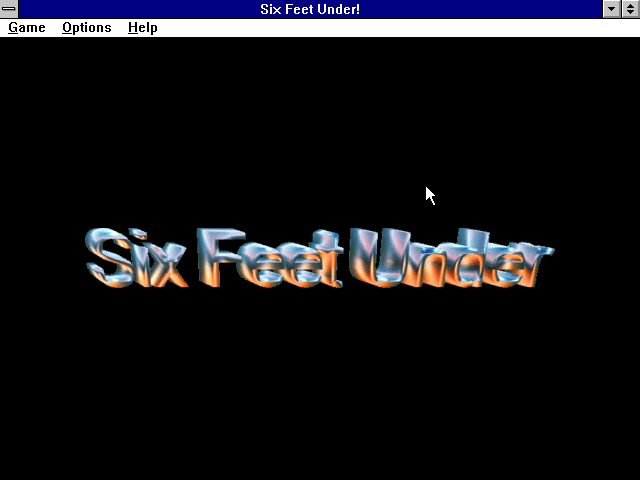
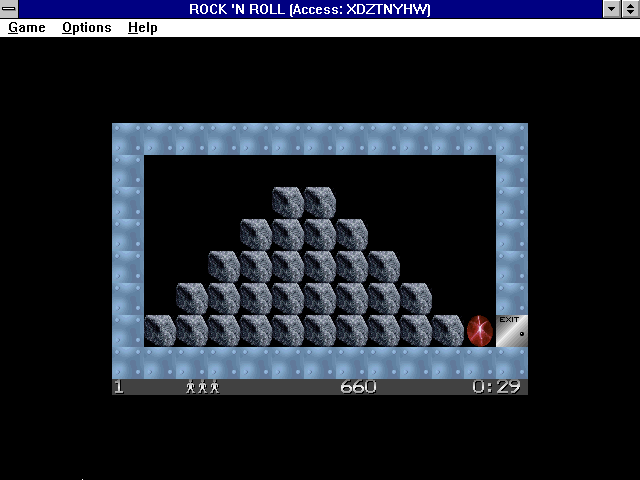
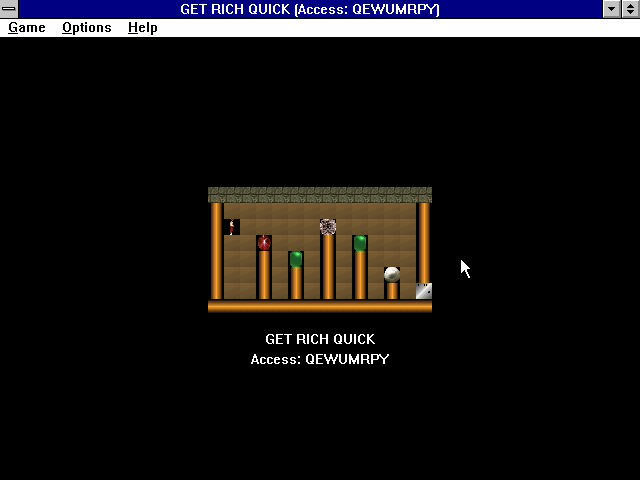
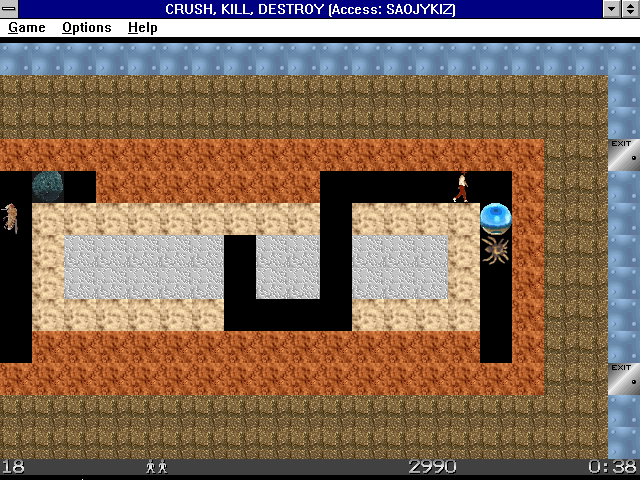
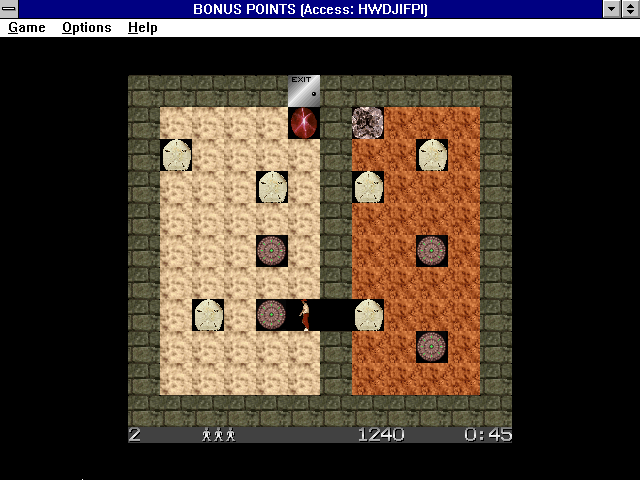



Reviews
There are no reviews yet.